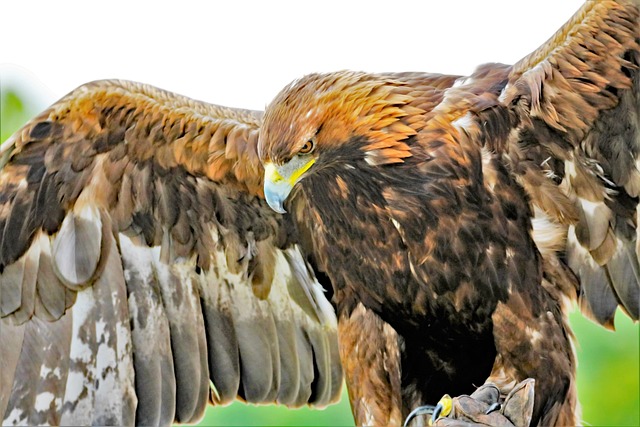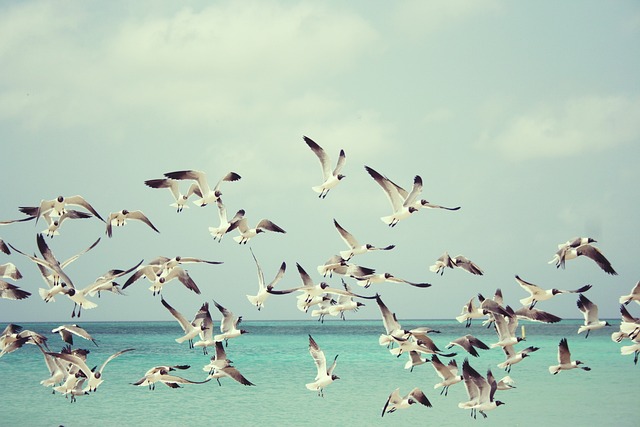Birds are the most incredible fliers in nature, and there are birds constructed for speed. Whether gliding in the air or diving at remarkable speeds, the world’s fastest birds possess incredible adaptations for these accomplishments. Learning about their speed, maneuverability, and record-breaking talents informs us of the wonders of bird flight.
Understanding Bird Speed: How Fast Can Birds Fly?
Birds are able to fly at such high velocities thanks to their slender bodies, strong wings, and light skeletons. Horizontal flight and dive speed are the two most common forms of fast bird travel. While a few birds do well in even, level flight, others reach record speeds diving.
Most Factors Affecting Bird Speed
- Wing Shape & Size: Narrow, pointed wings minimize drag and maximize efficiency.
- Body Weight & Structure: Lighter birds with streamlined shapes travel faster.
- Flight Technique: Flapping, gliding, and stooping (diving) control speed differences.
- Wind Conditions: Beneficial tailwinds increase speed.
Top 10 Fastest Birds in the World
| Bird Name | Top Speed (mph / km/h) | Flight Type |
|---|---|---|
| Peregrine Falcon | 242 mph (389 km/h) | Diving |
| Golden Eagle | 200 mph (322 km/h) | Diving |
| Gyrfalcon | 130 mph (209 km/h) | Horizontal |
| Common Swift | 106 mph (171 km/h) | Horizontal |
| Eurasian Hobby | 100 mph (160 km/h) | Horizontal |
| Frigatebird | 95 mph (153 km/h) | Horizontal |
| Spur-Winged Goose | 88 mph (142 km/h) | Horizontal |
| Red-Breasted Merganser | 81 mph (130 km/h) | Horizontal |
| White-Throated Needletail | 77 mph (124 km/h) | Horizontal |
| Grey-Headed Albatross | 68 mph (110 km/h) | Horizontal |
Peregrine Falcon: The Ultimate Speed Champion

The Peregrine Falcon is the world’s fastest bird. When it hunts, it climbs to a great altitude before performing a stoop dive, accelerating to as much as 242 mph (389 km/h). The streamlined shape of this bird, powerful chest muscles, and sharp talons make it an effective flying predator.
Why Is the Peregrine Falcon So Fast?
- Exceptional Wing Design: Long, tapering wings permit accurate control.
- High-Energy Muscles: Quick wingbeats produce immense thrust.
- Aerodynamic Skull & Beak: Minimizes air resistance while diving.
Golden Eagle: The Power Flyer

The Golden Eagle is another speedster, diving at speeds of up to 200 mph (322 km/h). This magnificent raptor employs its strong wings and sharp eyesight to scan from miles away before plunging down with immense power.
Fastest Birds in Horizontal Flight
Although diving birds fly at incredible velocities, certain species sustain high speeds during level flight. The Common Swift, which travels at 106 mph (171 km/h), is the most rapid in prolonged horizontal flight. This bird lives in the air for nearly its entire life, even sleeping in flight!
Other fast flyers of note are the Gyrfalcon and Eurasian Hobby, both flying in excess of 100 mph (160 km/h) in level flight.
How Do Birds Achieve Such High Speeds?
Birds employ various methods to achieve optimal speed, such as:
- Flapping Flight: High-frequency wingbeats produce thrust in the forward direction.
- Soaring & Gliding: Minimizes energy expenditure over great distances.
- Stooping (Diving): Gravity helps accelerate speed.
- Wing Flexibility: Wing angle adjustments improve aerodynamics.
Evolutionary Adaptations of Speedy Birds
Fast-flying birds have special adaptations, including:
- Hollow Bones: Minimize weight while still providing strength.
- Efficient Respiratory Systems: Enable high oxygen uptake for long-lasting endurance.
- Advanced Vision: Picking up prey or threats at far distances.
Fastest Birds vs. Fastest Land and Water Animals
Birds, especially falcons and swifts, outrun most land and sea animals, demonstrating their superiority in the air. A comparison of birds with other fast animals accentuates their supremacy in air speed.
| Category | Fastest Animal | Top Speed |
| Fastest Bird (Diving) | Peregrine Falcon | 242 mph (389 km/h) |
| Fastest Bird (Horizontal Flight) | Common Swift | 106 mph (171 km/h) |
| Fastest Land Animal | Cheetah | 75 mph (120 km/h) |
| Fastest Marine Animal | Sailfish | 68 mph (110 km/h) |
Why Speed Matters for Birds
- Hunting: Hawks such as falcons depend on rapid attacks.
- Migration: Rapid birds cover thousands of miles without wasting energy.
- Predator Evasion: Rapid escapes assist birds in evading danger.
Conclusion
Birds are phenomenal speedsters, and the Peregrine Falcon is the champion of the pack at 242 mph (389 km/h). From diving at top speeds to flying smoothly across continents, these flying wonders demonstrate nature’s remarkable engineering. Learning about their adaptations, habits, and records emphasizes their importance in the animal kingdom and remains a wonder for bird watchers and scientists.









